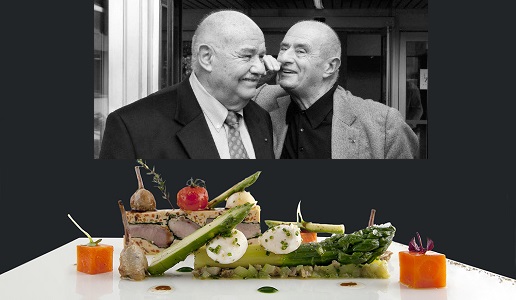Nouvelle cuisine

The basic principles of the movement known as nouvelle cuisine are different from those that are often attributed to it today and represented a critique of and break from classic French cuisine, making it in some ways closer to Italian regional cuisine.
1. “Use fresh and quality products”
2. “Lighten up the menu”
3. “Do not be systematically modernist”
4. “Nevertheless, explore new techniques”
5. “Avoid marinating, hanging, fermentation and so on”
6. “Eliminate rich condiments and sauces”
7. “Do not ignore dietetics”
8. “Don’t cheat in plate presentations
9. “Be inventive”
10. “Don’t overcook”
Listed above are the ten commandments of so-called nouvelle cuisine, a kind of manifesto drawn up by the famous French food critics Henri Gault and Christian Millau in 1972. I have brought them up because many of you, as myself, have heard hundreds of people, chefs, food critics and lovers, as well as normal people, proudly declare how they are in favor of tradition and are vehemently opposed to nouvelle cuisine. By doing this they have created great confusion by misunderstanding that term, which was French and thus, in some way, “sophisticated” (another clear misconception), a kind of synonym of “creative cuisine”. This would be a bit like if we were to consider the surrealist or cubist movements to be the only alternatives to non-figurative art.
The truth is nouvelle cuisine was a precise and defined movement, one that had a beginning, with the “commandments” of Gault and Millau, and an end, more or less at the end of the 1980s, thus not just yesterday. It had some great protagonists, like Michel Guerard, Paul Bocuse, Alain Chapelle, Freddy Girardet and, in Italy, probably Gualtiero Marchesi. It was certainly at the roots of a theoretical and technical change in international cuisine, while at the same time it was distinctly different from molecular cuisine or fusion, which have nothing in common. For some of those opposed to nouvelle cuisine, the movement was the epitome of pure evil, it was the opposite of “true” tradition and thus was to be considered heresy.
In reality, the birth of nouvelle cuisine was inspired by the need to go transcend the swamp of classic French cuisine, that of Escoffier, for example, which was based on cooking for hours, the abundant use of roux-based sauces and a basic under-appreciation of prime ingredients that were sacrificed on the altar of elaborate cooking methods that basically hid their flavors. A close look at the nouvelle cuisine “commandments” shows how they are the opposite of this, with the first dictating “the use of fresh and quality products”, which in turn paved the way for the “zero kilometer” movement of using just local ingredients. Luigi Veronelli, who was not exactly a fan of Gault and Millau, often said that the French needed to base nouvelle cuisine a theory given that their gastronomic tradition was an evolution of pre-revolutionary aristocratic cuisine. In Italy, on the other hand, regional cuisine was already a nouvelle cuisine because it was based on local ingredients and traditions that were much from the people. Italy has also seen the advance of modern methods which have resulted in, sometimes in an exaggerated and unexplainable way, a “re-interpretation” of certain dishes. It is almost as if we have forgotten that those principles which today are branded as negative are not, in fact, so negative at all.

 Italiano
Italiano







